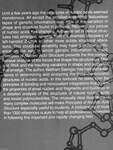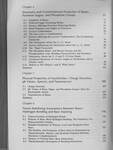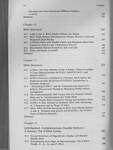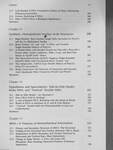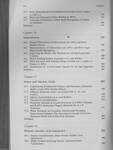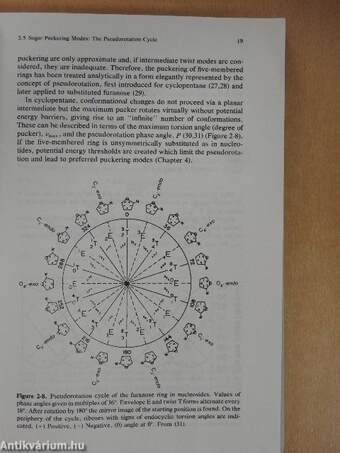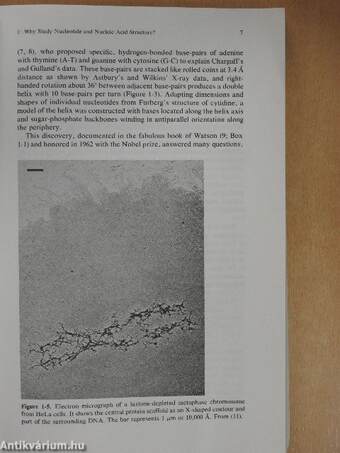1.117.562
kiadvánnyal nyújtjuk Magyarország legnagyobb antikvár könyv-kínálatát
Principles of Nucleic Acid Structure
With 227 Figures
| Kiadó: | Springer-Verlag |
|---|---|
| Kiadás helye: | New York |
| Kiadás éve: | |
| Kötés típusa: | Ragasztott papírkötés |
| Oldalszám: | 556 oldal |
| Sorozatcím: | Springer Advanced Texts in Chemistry |
| Kötetszám: | |
| Nyelv: | Angol |
| Méret: | 23 cm x 16 cm |
| ISBN: | 0-387-90761-0 |
| Megjegyzés: | Fekete-fehér és egy színű ábrákkal illusztrálva. |
naponta értesítjük a beérkező friss
kiadványokról
naponta értesítjük a beérkező friss
kiadványokról
Fülszöveg
Until a few years ago the structures of nucleic acids seemed
monotonous. All except the smallest resembled featureless
tapes of genetic information with little of the variation in
shape and structure found in proteins. Recently, our picture
of nucleic acids has changed. A diverse set of helical struc-
tures has emerged, ranging from the dramatic discovery of
left-handed Z-DNA to other more subtle structural altera-
tions. This structural variability may have a profound influ-
ence on the way in which genetic information is used.
Principles of Nucleic Acid Structure presents the first compre-
hensive analysis of the forces that shape the structures of DNA
and RNA and the resulting variations in shape and properties
that emerge. The author, Wolfram Saenger, has had vast expe-
rience in determining and analyzing the three-dimensional
structures of nucleic acids. In this textbook he starts from the
principles of bonding and noncovalent integrations that govern
the... Tovább
Fülszöveg
Until a few years ago the structures of nucleic acids seemed
monotonous. All except the smallest resembled featureless
tapes of genetic information with little of the variation in
shape and structure found in proteins. Recently, our picture
of nucleic acids has changed. A diverse set of helical struc-
tures has emerged, ranging from the dramatic discovery of
left-handed Z-DNA to other more subtle structural altera-
tions. This structural variability may have a profound influ-
ence on the way in which genetic information is used.
Principles of Nucleic Acid Structure presents the first compre-
hensive analysis of the forces that shape the structures of DNA
and RNA and the resulting variations in shape and properties
that emerge. The author, Wolfram Saenger, has had vast expe-
rience in determining and analyzing the three-dimensional
structures of nucleic acids. In this textbook he starts from the
principles of bonding and noncovalent integrations that govern
the properties of small nucleic acid fragments and builds up to
a detailed analysis of the structures of natural nucleic acids
and model polynucleotides. The unusually clear illustrations of
many complex molecules will make Principles of Nucleic Acid
Structure especially useful to students. A bibliography of more
than 1300 references is sure to help all professionals interested
in following this important and rapidly changing field. ¦ Vissza
Témakörök
- Idegennyelv > Idegennyelvű könyvek > Angol > Egyéb
- Idegennyelv > Idegennyelvű könyvek > Angol > Természettudományok > Biológia
- Idegennyelv > Idegennyelvű könyvek > Angol > Természettudományok > Kémia
- Természettudomány > Kémia > Biokémia
- Természettudomány > Kémia > Idegennyelvű
- Természettudomány > Kémia > Tankönyvek > Felsőoktatási
- Természettudomány > Biológia > Biológia, általános > Genetika
- Természettudomány > Biológia > Biológia, általános > Tankönyv > Felsőoktatás
- Természettudomány > Biológia > Biológia, általános > Biokémia
- Természettudomány > Biológia > Biológia, általános > Idegennyelvű
- Tankönyvek, jegyzetek, szöveggyűjtemények > Természettudományok > Biológia
- Tankönyvek, jegyzetek, szöveggyűjtemények > Természettudományok > Biológia > Felsőoktatási
- Tankönyvek, jegyzetek, szöveggyűjtemények > Természettudományok > Kémia
- Tankönyvek, jegyzetek, szöveggyűjtemények > Természettudományok > Kémia > Felsőoktatási






